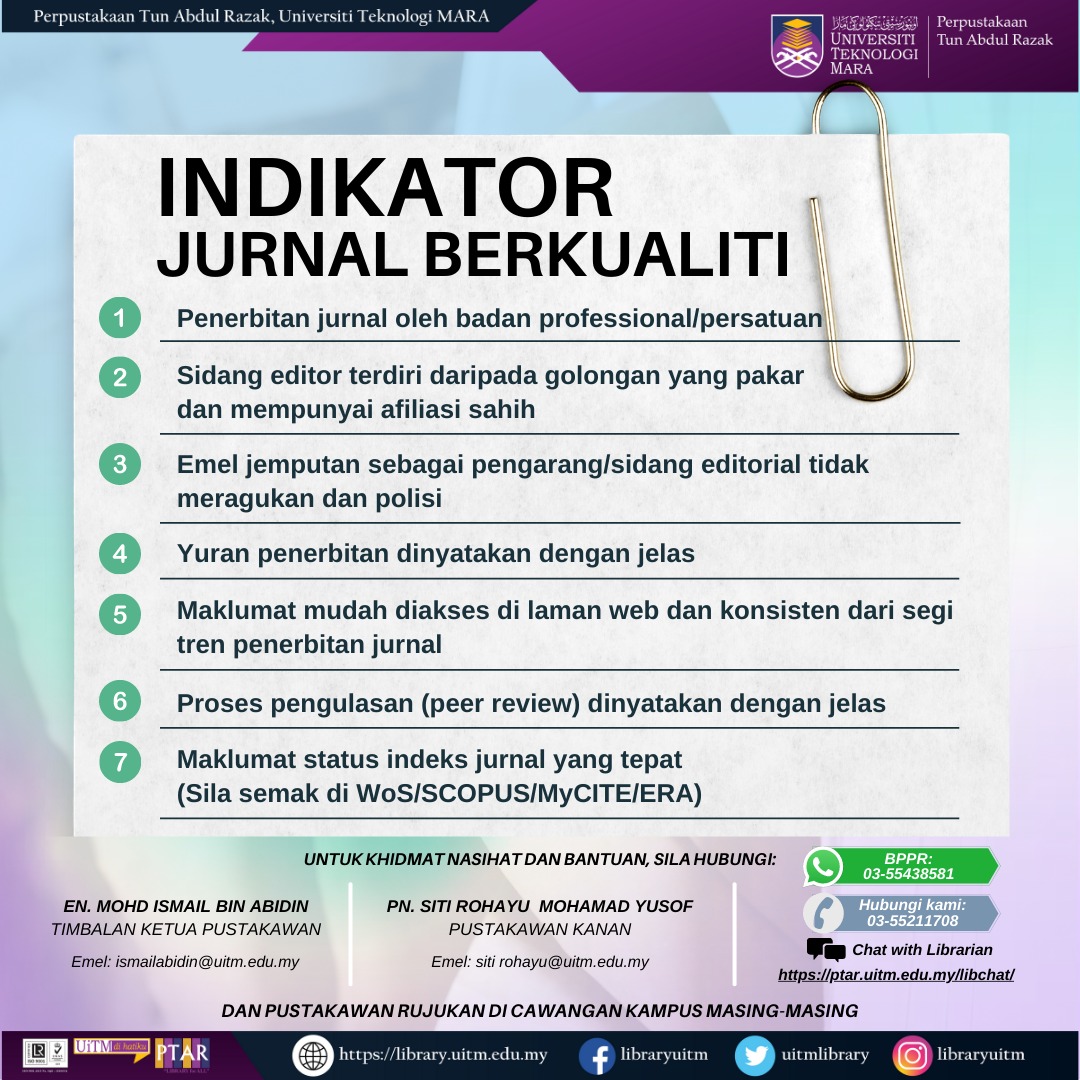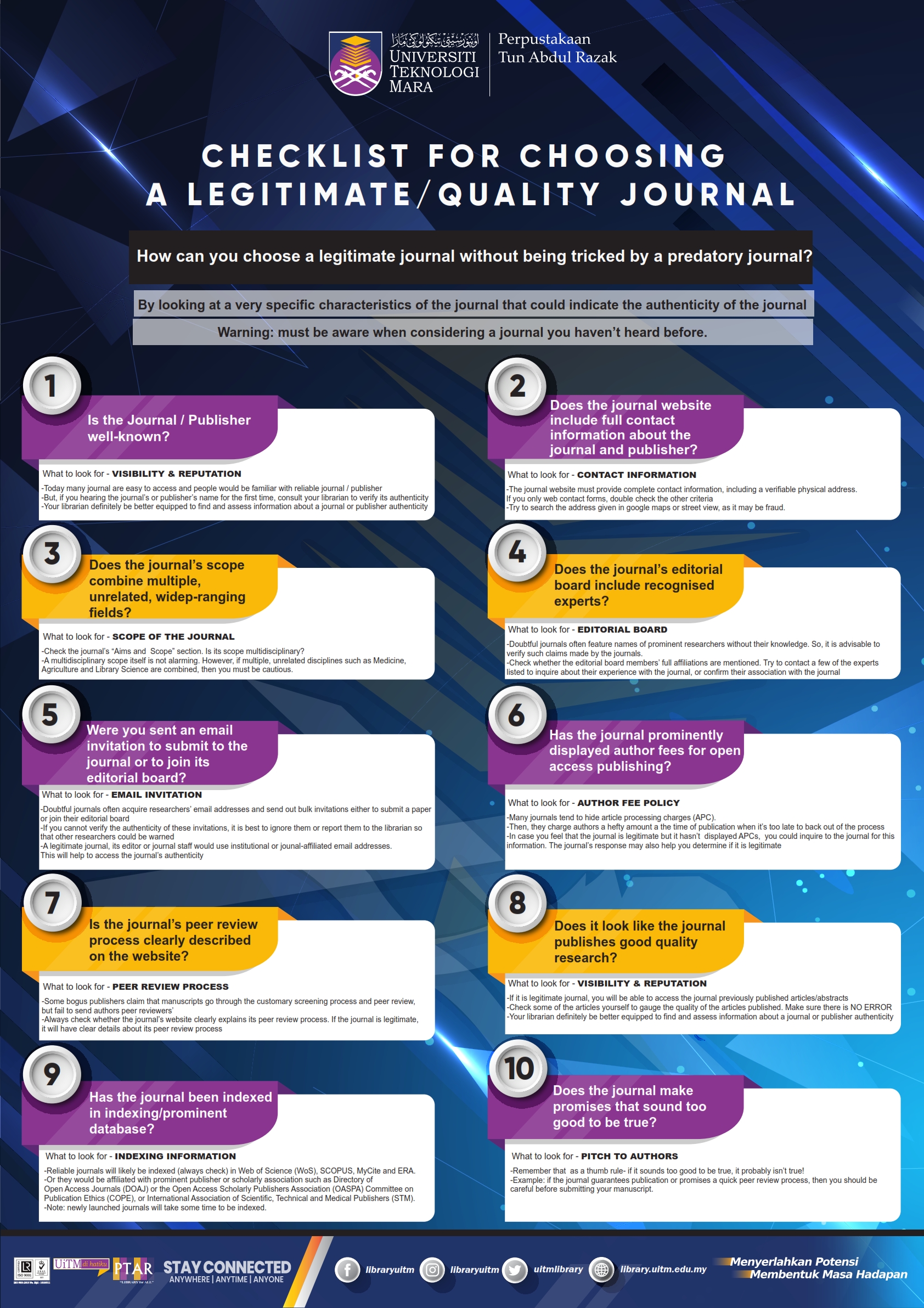It is essential for researcher / writer to conduct an analysis of journal activities before they start to publish the paper in those journals.
This can be done with high-impact journal searches such as WoS, Scopus, and ERA. For local journals, researchers may check with MyJournal.
This can be done with high-impact journal searches such as WoS, Scopus, and ERA. For local journals, researchers may check with MyJournal.
A predatory journal refers to a publication that operates on a deceptive or unethical basis, primarily focused on making profits rather than promoting high-quality research and academic integrity. These journals often exploit the open-access publishing model, which allows articles to be freely accessible to readers, to generate revenue from authors who are unaware or desperate for publication opportunities.
Predatory journals typically employ aggressive marketing tactics, spamming researchers with email invitations to submit articles or serve as editors or reviewers. They may claim to have a fast peer-review process or promise swift publication without conducting rigorous peer review or quality checks. In some cases, they may falsely advertise their indexing or impact factor to deceive authors.
These journals often lack proper editorial boards and fail to maintain standard publishing practices, such as thorough peer review, plagiarism checks, or ethical oversight. They may accept and publish low-quality or even pseudoscientific articles, undermining the credibility of the published research.
Publishing in predatory journals can have serious consequences for researchers, as it can harm their academic reputation and hinder their career advancement. Many reputable universities and funding agencies explicitly discourage or penalize publications in such journals.
To avoid falling prey to predatory journals, researchers are advised to thoroughly evaluate the credibility and reputation of a journal before submitting their work. Factors to consider include the journal's indexing in reputable databases, the reputation and expertise of the editorial board, transparent publication policies, and overall quality of published articles. Consulting with experienced colleagues or seeking guidance from institutional librarians or scholarly societies can also be helpful in navigating the publishing landscape.Regenerate response
Predatory journals typically employ aggressive marketing tactics, spamming researchers with email invitations to submit articles or serve as editors or reviewers. They may claim to have a fast peer-review process or promise swift publication without conducting rigorous peer review or quality checks. In some cases, they may falsely advertise their indexing or impact factor to deceive authors.
These journals often lack proper editorial boards and fail to maintain standard publishing practices, such as thorough peer review, plagiarism checks, or ethical oversight. They may accept and publish low-quality or even pseudoscientific articles, undermining the credibility of the published research.
Publishing in predatory journals can have serious consequences for researchers, as it can harm their academic reputation and hinder their career advancement. Many reputable universities and funding agencies explicitly discourage or penalize publications in such journals.
To avoid falling prey to predatory journals, researchers are advised to thoroughly evaluate the credibility and reputation of a journal before submitting their work. Factors to consider include the journal's indexing in reputable databases, the reputation and expertise of the editorial board, transparent publication policies, and overall quality of published articles. Consulting with experienced colleagues or seeking guidance from institutional librarians or scholarly societies can also be helpful in navigating the publishing landscape.Regenerate response
Check that the journal is eligible for inclusion in the Directory of Open Access Journals (DOAJ). This is the best source for OA journals.
Google Maps: Look at the street view of a publishers address using Google Maps. Does it look like the type of office you would expect a publisher to operate from?
Google Scholar Metrics shows the top-cited journals in various disciplines.
Principles of Transparency and Best Practice in Scholarly Publishing: The Open Access Scholarly Publishers Association's principles of transparency and best practices for journals and publishers.
Think.Check.Submit is a campaign to help researchers identify trusted journals for their research. It is a simple checklist researchers can use to assess the credentials of a journal or publisher.


